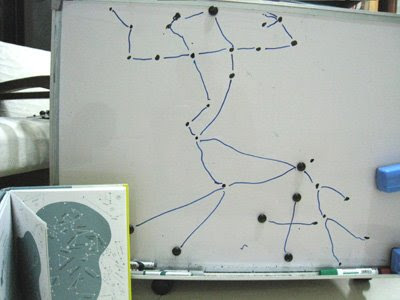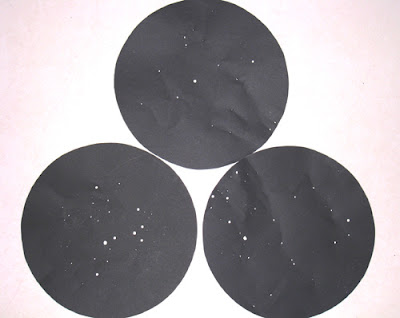I have been thinking of how we can systematically learn the constellations. Here is my plan.
I have chosen to use Stars: A New Way to See Them by Rey as our text and reference constellation chart. The lines he drew makes up a picture that better depicts the object that the constellations were named after (Rey tells you in English what those constellation names are.). This makes more sense than many other versions I have come across. You can have a feel of connecting the constellations using Rey's scheme here (These are not as detailed as those found in the book).
Another good point about Rey's charts is that they show the magnitude of the stars. This helps a lot in identifying a constellation. The relative brightness of the stars can help with differentiating say the Southern Cross from the False Cross.
There are 17 detailed constellation charts in the book. I figured that if we can familiarize ourselves with one to three charts a month (that is about the range that is visible in Singapore, right overhead, in a month) we will be able to cover most of them in a year or so.
I thought of a 3- stepped method:
Step 1 - Copy
Using the idea of copywork, I have asked my boys to copy the constellation I have chosen (based on what is visible during this time of the year) on our whiteboard. Brighter stars were represented with magnets.

This is my boy's version of the Centaur and Southern Cross.
Step 2 - Identify
I made quiz cards by punching holes on black paper to see if my boys (and I) could spot the constellation they have just learnt. These are replicates of chart 11 (Virgin, The Scales, Crow), 12 (Serpent Holder, Scorpion) and 17 (Southern Cross, Centaur, Wolf) from Rey's Star. Each chart is about 15 cm wide.

They look like real stars when held up against the light! I wanted these quiz cards to be circular so that one would have to figure out where north is. This is to me a very necessary life skill! See if you can spot the Southern Cross and the Centaur on any of these.
How did I make these?
I made a photocopy of the constellation chart from the book, place the copy on top of a piece of black paper and push pins on where the stars are supposed to be (making sure that the pins go through the copy as well as the black paper). I use pins for faint stars, a bicycle spoke (satay stick would do too) for brighter stars and a whole series of hole punchers with varying diameters for the very bright stars.
If this sounds too complicated, here is another idea that I have been toying with. It uses film canisters. (canister constellation template found here)
Step 3 - Star gaze
Obviously, the best way to acquaint oneself with the night sky is to gaze at it more often. We have started with the constellation we have learnt. It is interesting to see how the two-dimensional sky charts translates out into the vast night sky. We are not good at the real thing at all but I am hoping that we will improve with practice. :-b
The light pollution and the often overcast skies have been our main problems. Living in the heart of a densely populated estate also means we don't have one single location where we get an unobstructed view of the whole night sky. We have a relatively good view of the southern sky from our balcony, a not so satisfactory view of the northern sky from the staircase on the top floor of a neighbouring block of flats (corridor lights are really hampering our efforts) and a reasonable view of the sky right overhead from in the middle of the field in front of our block.
We go star gazing with our star charts (Rey's and one from Astroviewer that shows where the planets are too!), red flashlight (so we can look at your star chart without spoiling our vision for the stars) and a mat (to prevent neck aches!). I would love to have a green laser pointer (more information here) except that I found out that one costs a whopping S$400!!!
Here are some other tidbits I have found:
- I recently bought a book published by the Singapore Science Centre called A Sky Book for the Tropics by Heong Kam Khow and Kamaria bte Abdul Ghani. It has the monthly star maps for the evening and predawn sky in Singapore.
- This interactive site can be useful. It allows you to "see less stars", meaning that they reveal only the brighter stars. This gives a more realistic picture of what you are likely to see in a light-polluted sky like Singapore's. Constellation lines and names can also be switched on and off according to your preference.
- My boys enjoyed another interactive site that gives an introduction to Orion and the Big Dipper. You read, look at the picture, click "next", follow instructions to spot constellation and so on.
- Notebooking pages on the 27 constellations.
- Cute song about the constellations.
- Ebook/etext The Stars and Their Stories by A. M. M. Griffith.














